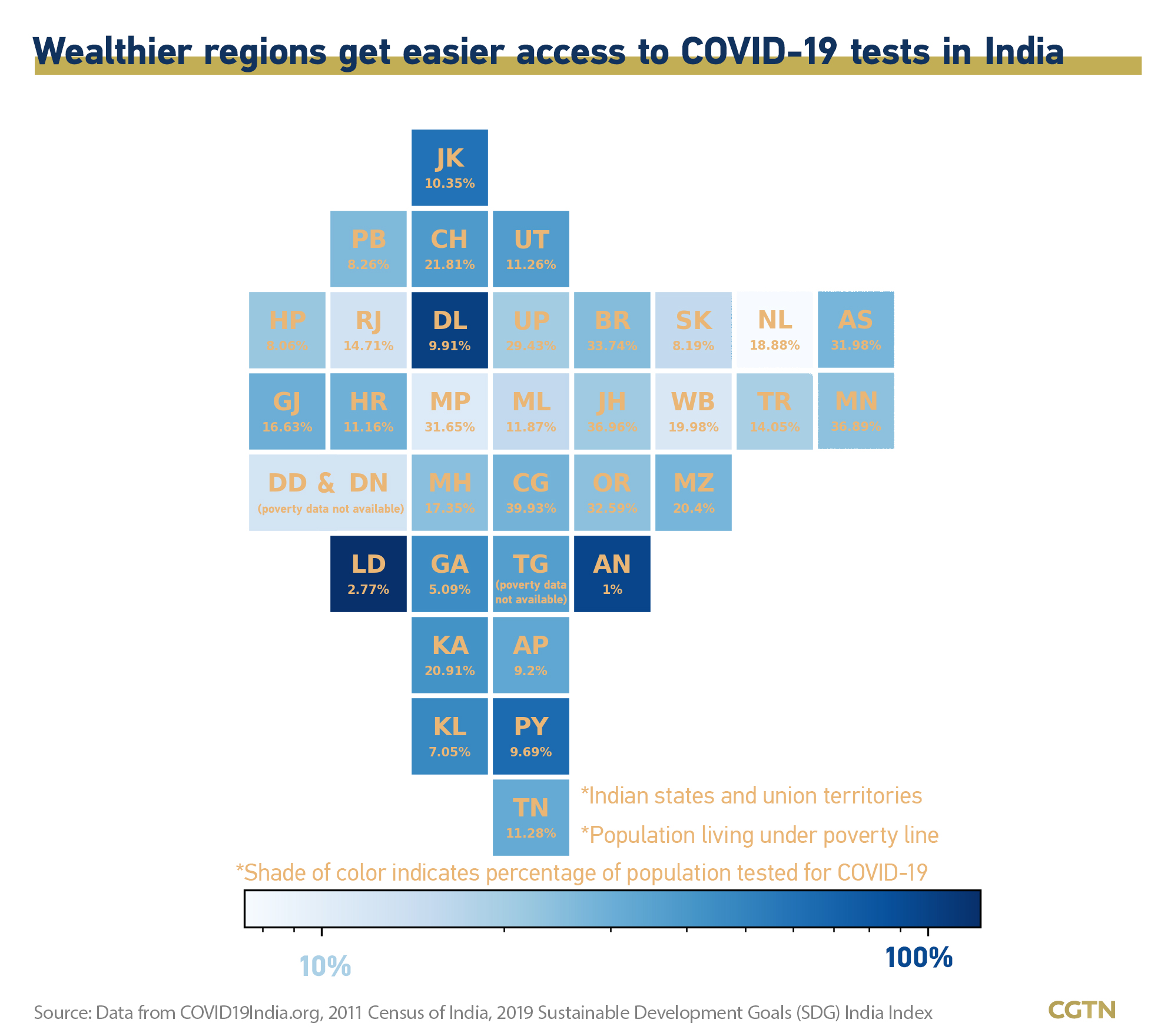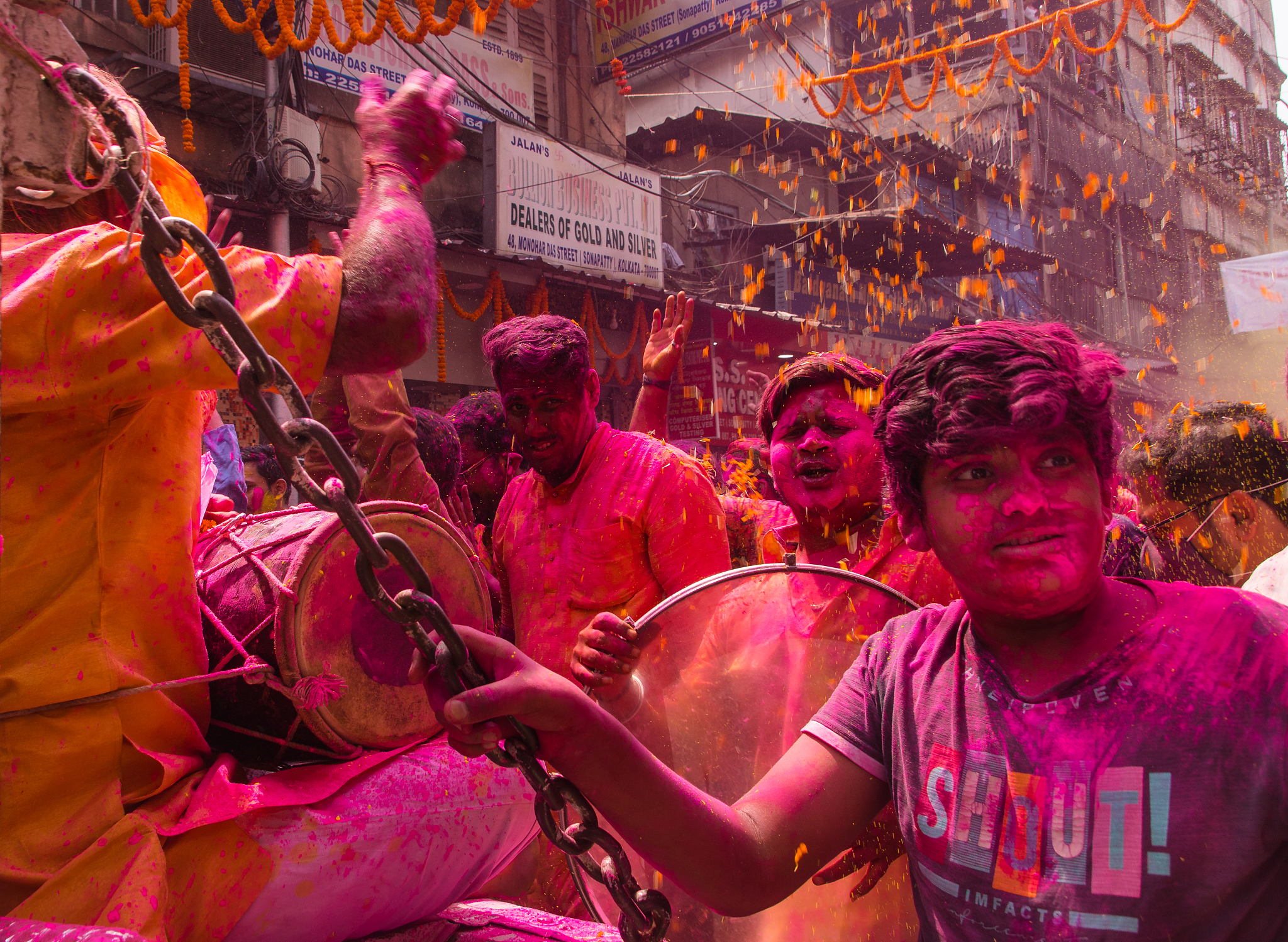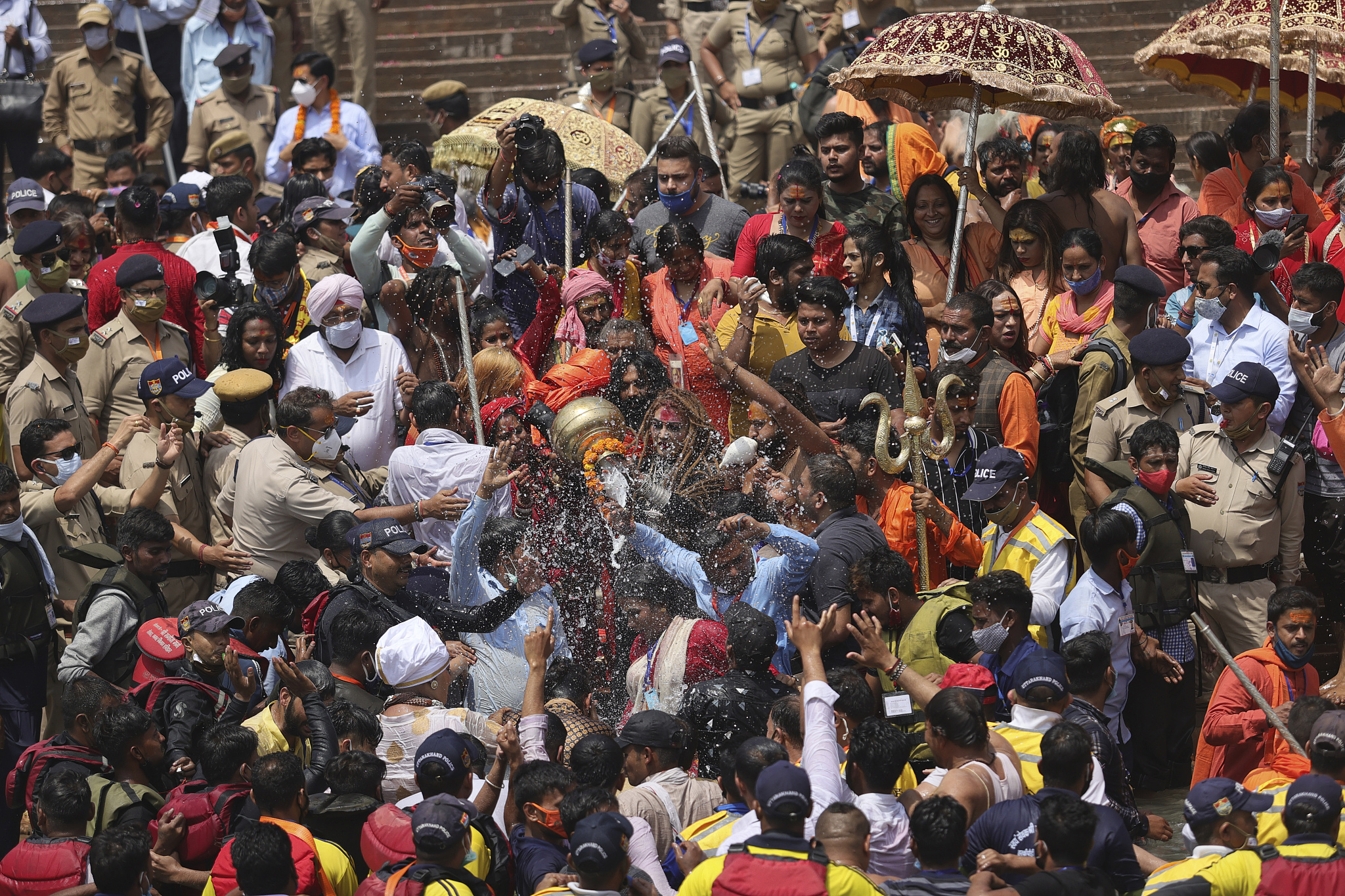The world's second-most populous country, India, is now struggling to contain a second wave of infections much more severe than its first last year.
India reported more than 300,000 new coronavirus cases for a tenth consecutive day on Saturday, taking its overall confirmed case count a step closer to 20 million. The country has seen more than 8 million new confirmed cases and more than 58,000 deaths from coronavirus in two months.
But many people have failed to get tested early or at all, which means the reported caseload may be much lower than the real extent of infections.
India has given 73 million tests since March when the second wave of coronavirus started to surge in the country. Cumulatively, the country has performed more than 290 million tests since January 2020. If equally distributed, 21 percent of the total population has been tested for COVID-19.
However, data shows that in areas such as Lakshadweep, 122 percent of the population has been tested. In Videlicet, some people are tested more than once. While in areas such as Nagaland, only 7 percent of its population has gone through coronavirus testing.

Lakshadweep, located in the southwestern coast of India, is one of the areas with least people living under the poverty line. CGTN combined the COVID-19 testing data with the percentage of the poor population by region and found that the five most tested areas have a poor population rate of under, or slightly over, 10 percent.
Although India has quadrupled the number of tests conducted daily, people are still struggling to get access to testing. Medical experts say real numbers across the country may be five to 10 times higher than the official tally, according to Reuters.
Hospitals have filled to capacity, medical oxygen supplies have run short, and morgues and crematoriums have been swamped as the country deals with a surge in cases.

The high-spirited citizens immersed in the festive of colors during the Holi celebration on March 27, 2021, at Kolkata, India. /CFP
The high-spirited citizens immersed in the festive of colors during the Holi celebration on March 27, 2021, at Kolkata, India. /CFP
Despite the rocketing coronavirus situation across the country, crowds gathered for multiple religious celebrations with barely any preventive measures for COVID-19.
Hindus threw colored powder and sprayed water in massive Holi gatherings on March 29, ignoring calls to stay at home to avoid turning the festivities into superspreader events.

A devotee pours milk as they gather to take holy dips in the Ganges River during Mahakumbh on April 12, 2021, at Uttarakhand, India. /CFP
A devotee pours milk as they gather to take holy dips in the Ganges River during Mahakumbh on April 12, 2021, at Uttarakhand, India. /CFP
Millions of devotees descended on the banks of the Ganges River in April to celebrate the weeks-long Mahakumbh.
People gathered in the northern city of Haridwar to take a dip in the water. The festival peaks in April and is held only once every 12 years.

